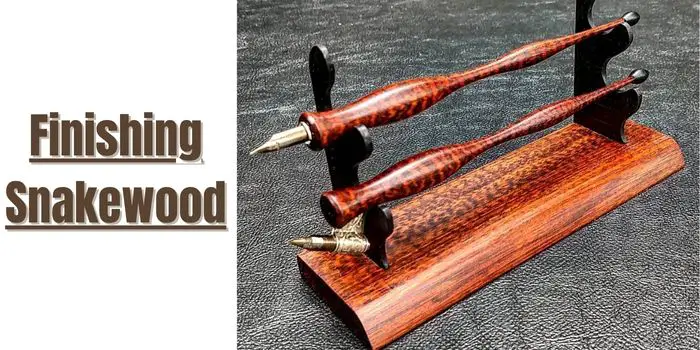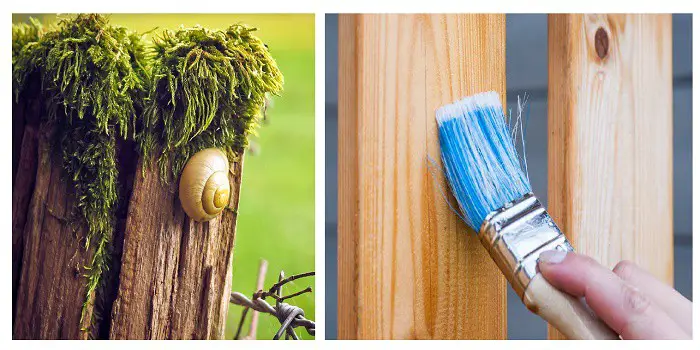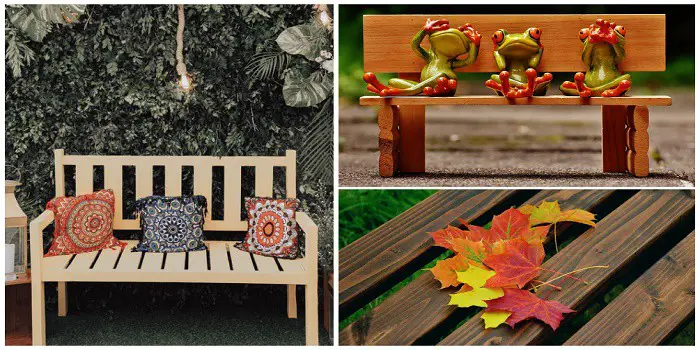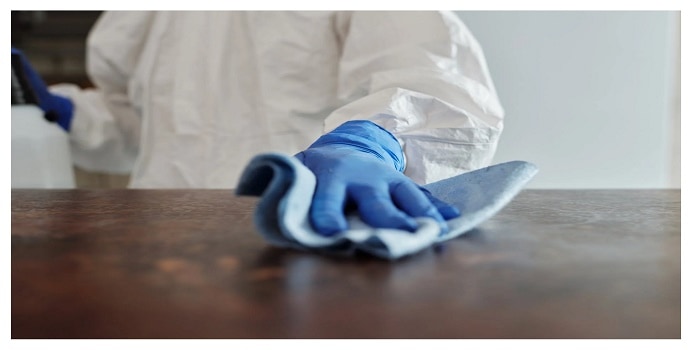
Snakewood is among the rarest and most expensive commercially available wood species worldwide.
The main reason it is so expensive is that it is tough to work with, and the small trees from which the timber comes are getting scarce.
It is hard to find large pieces of snakewood, and they are mostly available in the form of veneers.
Primarily snake wood is used to make smaller turned or specialty objects, including knives, tool handles, canes, pens, pool cues, parasols, bottle stoppers, violin bows, and fine furniture parts.
If you are lucky enough to have some snakewood and would like to use it for your project, or if you already have a piece of furniture (or other products) made with snakewood veneers, getting it finished is a great idea.
In this article, I will discuss all you need to know about finishing snakewood, the right finishing products to use, the challenges you may face, and all the tips and strategies you should follow.
So, let’s get started with knowing a little more about this wood type.
Why is Snakewood Called So?
The snakewood gets its name from the pattern of snakeskin on it.
In fact, for anyone who hasn’t seen this wood before, it’s easy to see why a piece of snakewood is called snakewood: the dramatic specks and splotches resemble the skin of a snake.
Wood is usually a reddish brown with contrasting darker brown or black patches. With time and exposure, color fades and homogenizes.
Not only is snakewood one of the world’s most colorful, dense, and durable species of wood, but it also competes with lignum vitae as the heaviest commercial wood in the world among woodworkers.
That said, snakewood has been reported as a minor skin and respiratory irritant; severe reactions are, although not very common.
So, it is essential to take the necessary precautions while working with this wood and use a mask, gloves, and proper ventilation to avoid any health issues.
- Scientific Name: Brosimum guianense
- Snakewood’s Janka Hardness: 3,800 pounds of force
- Distribution: Coastal regions of northeast South America
Finishing Snakewood (Step-by-Step)
When finishing any object made of snakewood, the first step is to figure out what kind of finish will work on it and what expectations you have with your finished snakewood project.
Since the wood is too dense, oily, and prone to splitting, the most commonly used method of finishing snakewood is oiling it using boiled linseed or tung oil.
I regularly use Formby’s Tung oil to polish my hunting knives and a few of them in my kitchen. And it works pretty well all the time.
You can use the same for oiling your bows of the bow-stringed instruments, pool cues, turned bowls, or any other objects made of snakewood.
I think paints, stains, and other wood varnishes (lacquers or shellac) do not work well on snakewood because of their density and oil content.
Plus, if you coat them with these finishing products, you will lose the natural beauty of the wood that comes with it.
Oiling is the only way to finish this wood, and it should be done in multiple thin coats to ensure even coverage.
Here are some tips on how to finish the snakewood correctly…
1- Sand the Snakewood
Before oiling the snakewood object, evenly sand it down using 800-grit sandpaper from all sides, edges, nooks, and crannies.
Generally, a higher grit (600 up to 1000) sandpaper is a good option for small-turned snakewood objects.
Still, you may have to use a smaller grit (320 up to 400) sandpaper if the wood has any unevenness or imperfections that need to be fixed.
Sanding the snakewood is crucial, mainly when working on old wood or if the wood has some black stains or tarnishes on the surface that you need to get rid of.
Remember to use a block sander or hand sander to avoid rounding off the edges of your project. These are good to use on smaller objects made of snakewood.
2- Wipe the Object Clean
After sanding, wipe off all the dust using a tack cloth or a damp rag.
Make sure the surface is clean and free of debris before you plan to proceed to the next step.
You can clean the wood with a bit of denatured alcohol if any stain spots or patches are visible.
- Pour some denatured alcohol into the bowl
- Dip a clean rag in it and ring out the excess alcohol
- Rub the dirty spots using the dampened cloth in a circular motion until the dirt and grime are gone
- Wipe the area clean using a dry rag
3- Choose the Right Oil Finish
Snakewood is one of my favorite woods. I love working with it simply because of its color and appearance.
But if you handle it carelessly, it can split fast. Plus, the wood will not stabilize well if you do not do it correctly.
This also means that choosing the right oil for the wood is critical, and you should not ignore this step – before you apply any oil finish, make sure to choose the right one.
I recommend using Formby’s Tung oil (because I have already worked with it).
But boiled linseed oil is the best alternative to finish snakewood if you cannot find it in your location.
4- Apply the Finish to the Snakewood
Now, it’s time to apply the oil to the snakewood surface.
For this, you will need a lint-free rag and tung oil.
- Pour some oil into a small bowl
- Dip the rag in it and ring out any excess
- Wipe the oil across the wood in the direction of the grain
- Be sure to work it into all the nooks and crannies
- Let the oil soak in for a few minutes
- Wipe off any excess with a clean rag
- Repeat this process until you have the desired level of protection
Generally, it will take around three coats to get the glossy finish, but if you want, you can add more coats for a more polished look.
After you have applied the oil, let the finished snakewood object dry for at least 24 hours before using it.
What if You Do Not Finish the Snakewood?
Snakewood is an excellent wood species that can be left unfinished for a long. So, if you decide to use your small snakewood objects as it is, you can do so without any worries.
Since no large pieces of snakewood are used (like on tables or outdoor furniture pieces), there’s no question of protecting the wood or getting the wood damaged due to water or UV sun rays.
Oil is generally used to enhance the wood’s attractiveness and luster.
If you do not put the oil finish on snakewood once in a while, the only thing that happens to the wood is gradually lose its shine and contrast.
If you do not plan to finish the snakewood, sand it down using 400-grit sandpaper. This will give the wood a smooth surface that will not snag on clothes or skin.
Also, sanding it first is critical to get an even and consistent color if you plan to stain the wood for a color change.
The Bottom Line
Snakewood is a type of wood species known for its characteristic snakeskin patterns. It has a high natural luster and straight grains carrying fine, even texture.
Finish it correctly (with tung oil or boiled linseed oil) if you decide to use snakewood for your next project. The right oil finish will enhance the wood’s natural beauty and give it the protection it needs. For the best results, do not forget to sand the wood before you apply the finish.
Also, when working with snakewood, always remember to take your time and be patient. This way, you will be able to create beautiful snakewood projects that will last for a lifetime.

Hi, I am Mark Garner a professional carpenter, woodworker, and DIY painter. I live in the small city of Peoria, Arizona as a semi-retired woodworker. I have started this blog with a simple motive to help you with my wood experience in this sector. If you like to know more about what I love doing and how it all got started, you can check more about me here.




